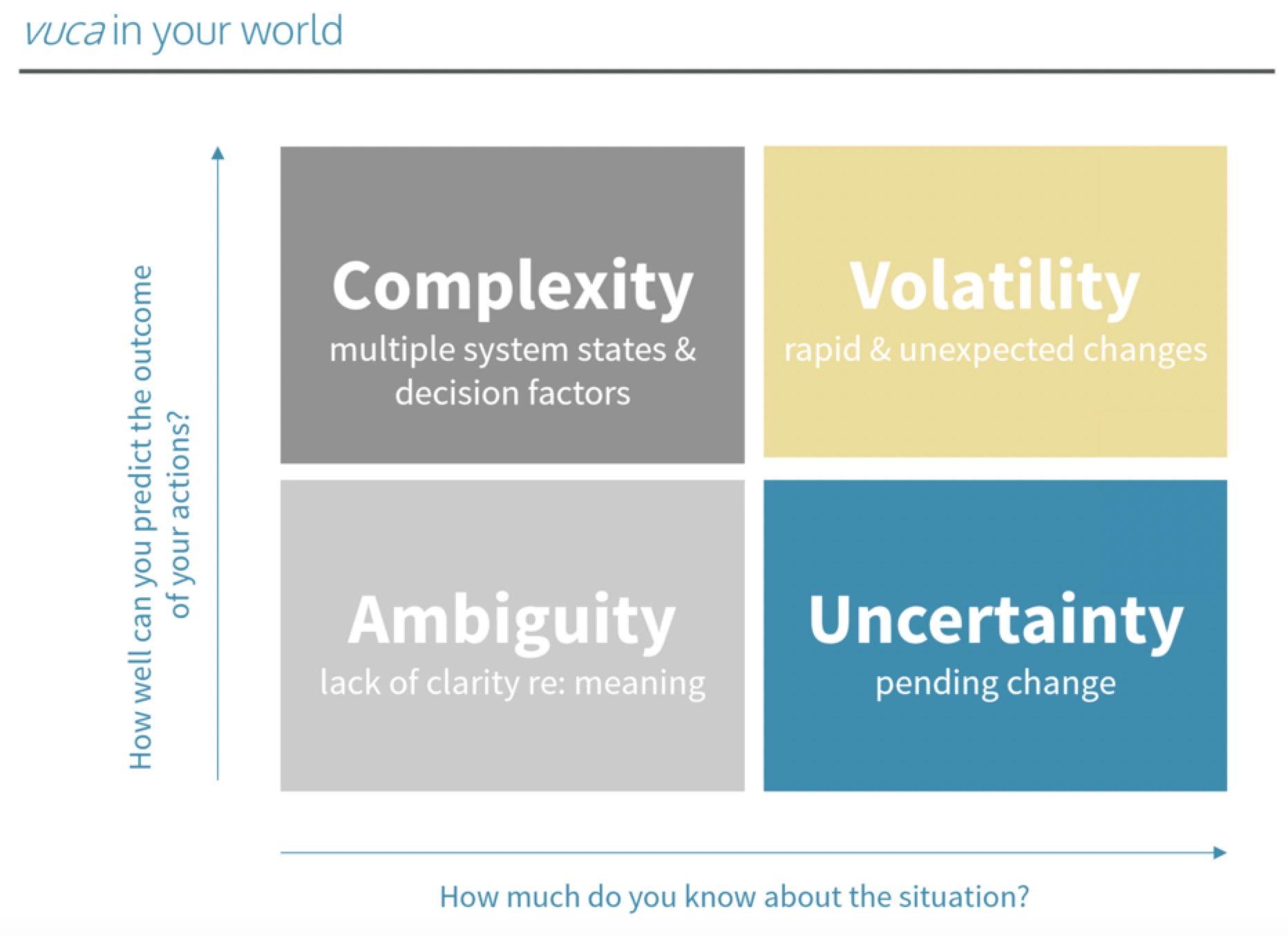Publised On:Dec 11, 2024

Update (11 December 2024):
This article was written in 2023 with Agile Project Management (AgilePM) V2 as baseline. In October 2024, Agile Business Consortium announced the launch of Agile Project Management V3 (AgilePM3). Though parts of the article below are still relevant, the topics covered may not be referring to the latest guidance on Agile Project Management. .
AgilePM for Scrum is an Agile approach to project management that has been produced to be resilient to the impact of VUCA (in other words adding risks inherently).
In the project context risks are expected to emerge as a consequence of VUCA (Volatility, Uncertainly, Complexity, Ambiguity) in the project or general business environment. Risks may be:
According to studies an agile project is less likely to be impacted by emerging events (in VUCA context) compared to a traditional project. This difference in approach means that something perceived as a risk to a traditional project (constrained by tightly defined requirements and baselined plans for their delivery) is unlikely to be identified as a risk to an Agile project. Contrary to traditional projects, uninterrupted reliance on focus and availability of the Product Owner needs to be identified as a risk to an agile project.
Thanks to the agile Ways of Working (Wow) risk management is, to a great extent, ‘built in’ to the agile approach instead of being ‘bolted on’ compared to more traditional projects. However, such heavy reliance on agile ways of working is, in itself, a risk. Agile Project Management expects the project approach to be tailored, where necessary, to address risk associated with both the objective of the project and the agile ways of working used in its delivery.
The Project Approach Questionnaire (PAQ) is used to identify areas of potential risk to the AgilePM for Scrum approach, as it is used in AgilePM framework. It can be used to negotiate tailoring (changes) to reduce risk and to improve the probability of success of project. Where changes cannot readily be made or if too much change would be required to be accommodated at once, the PAQ can be a useful guide to the tailoring of AgilePM for Scrum to suit individual project needs.
It is worth noting that some risks or issues identified through the use of the PAQ may actually have a root cause that has nothing to do with the AgilePM for Scrum approach, for instance the organisation’s culture may not be suitable for collaborative, empowered working. Hence, needing to addressed as a change initiative within the organisation. APMG Change Management guidance can provide all necessary assistance in such a case.
The tools, techniques and guidance associated with AgilePM and with Scrum have been tried, tested and refined over many years and achieved great results. But as Grady Booch – a leading methodologist and software engineer of the 1990s – famously said “a fool with a tool is still a fool”. AgilePM with Scrum provides excellent guidance, but it still needs to be applied in a disciplined and pragmatic way to ensure risk management is not overlooked at all.
Quick Links
Popular Courses
Latest News and Blog
Tecknologia is thrilled to announce our APMG International accreditation for delivering top-notch Artificial Intelligence (AI) Practitioner certification courses.
Agile Project Management (AgilePM®) is the world’s first and the best framework for managing projects using agile tools, techniques and practices. Recently released v3 of AgilePM has Scrum at the core of it, providing the unbeatable combination. &
APMG International Change Management, AgilePM®,AgilePgM® and AgileBA®, AgilePM for Scrum, ABC Scrum Master, ABC Product Owner and the associated Swirl Device logos are all trademarks of the APM Group limited, used under permission of the APM Group Limited. All rights reserved. APMG is the owner of the Accredited Consulting Organisation and Registered Consultant scheme. ITIL®, P3O®, MoP®, M_o_R®, MoV®, PRINCE2®, PRINCE2 Agile® and MSP® are registered trade marks of AXELOS Limited, used under permission of AXELOS Limited. All rights reserved. The Swirl logo™ is a trade mark of AXELOS Limited, used under permission of AXELOS Limited. All rights reserved.
Copyright ©
2026 All Rights Reserved.